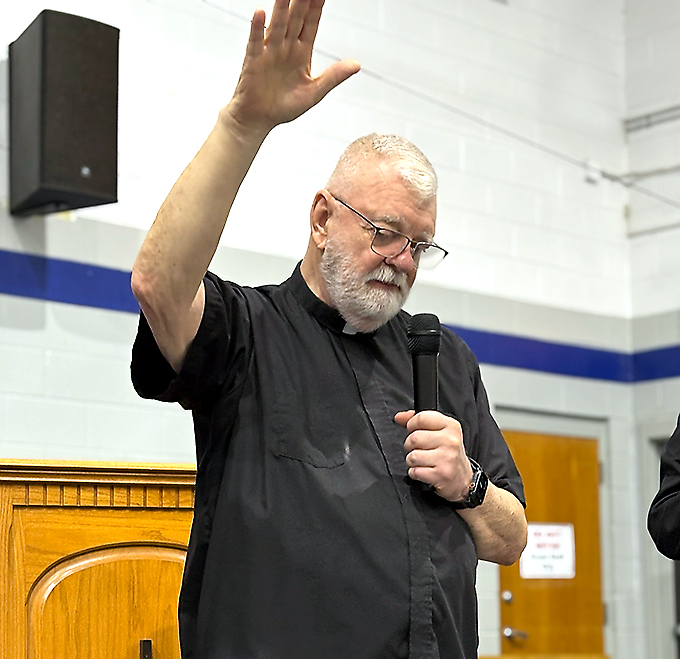As states add abortion rules, most Americans remain ambivalent
Published 11:13 am Friday, July 12, 2013
The absolutist voices have always dominated the abortion debate. But as it flares again in Congress and in legislatures across the country, the fight this time is heading into complicated political terrain, stirring the ambivalence that most Americans feel about the issue.
In Texas, one of the most restrictive and closely watched abortion laws in the country appears headed for passage this week after Republican Gov. Rick Perry resurrected it by calling a special session of the legislature. On Wednesday, the state House voted 96 to 49 to approve the controversial antiabortion legislation that has prompted two special sessions. The bill bans abortions after 20 weeks of gestation and imposes new limits on abortion clinics, doctors and pills. The state Senate is expected to add its approval later this week.
Meanwhile, in North Carolina, another GOP governor, Pat McCrory, is threatening to veto a measure that contains some of the same provisions, saying he is concerned that its new regulations on abortion clinics might cross “a fine line between safety measures and restrictions.”
Fine lines are not something activists on either side often recognize. But four decades after the Supreme Court’s landmark decision in Roe v. Wade, the views of most of Americans on abortion remain complex and conditional.
“While there are very well organized and very ideological pro-life and pro-choice groups, your average citizen is in neither of these groups. He or she is in the middle,” said Tom Smith, head of the General Social Survey at the University of Chicago’s National Opinion Research Center, who has been tracking public sentiment on abortion since 1972.
Except in the first few years after Roe v. Wade made abortion legal, when public acceptance grew, sentiment around the issue has not moved much. Nor is there a large generational divide.
That distinguishes abortion from other contentious social issues, such as same-sex marriage and marijuana legalization, where overall public opinion — led by the young — has shifted dramatically in favor of a more liberal position.
For decades, polls have shown that most people want abortion to be available to women, at least in the early stages of pregnancy, when the vast majority occur.
But Americans get increasingly uncomfortable with the procedure as a fetus gets closer to viability. In December, a Gallup poll found roughly six in 10 saying abortion should be legal in the first three months of pregnancy, but support dropped to 27 percent in the second trimester and to 14 percent in the third.
Data just released by the National Opinion Research Center show that most Americans think the woman’s decision to have an abortion is justified in some instances — rape (where 78 percent support abortion as an option), fetal deformity (77 percent) and serious danger to her health (87 percent), for example. But they do not support it when an abortion is sought because the woman believes she is too poor to have more children (a situation in which 45 percent say they approve of an abortion) or doesn’t want to marry the father (42 percent).
The fact that there are so many facets to when and why a woman may seek an abortion means the political argument around it — even more than most issues — is likely to be won by the side that more agilely frames the question.
If the focus is on the woman, abortion rights advocates have found they can usually gain the upper hand.
“The more you have people think about woman’s personal decision-making — how you can’t have someone else make that decision, especially politicians” — the better it goes for those who support abortion rights, said Democratic pollster Celinda Lake.
But if it centers on the fetus or the details of the procedure itself, opponents are in a better position.
Particularly in the early years after Roe v. Wade, “there was too much abstract debate,” said Marjorie Dannenfelser, president of the Susan B. Anthony List, which promotes female candidates who are against abortion. “We have found that the more specific you are about the thing you are talking about, the more public opinion will move your way.”
Both principles have been at work over the past few election cycles.
In last year’s election, Republicans lost two U.S. Senate races in large part because GOP candidates made insensitive comments about pregnancies that result from rape. Democrats rallied their base by accusing Republicans of waging a “war on women” with their efforts to defund Planned Parenthood and through legislation, in states including Virginia, that would require women seeking abortions to have intrusive and medically unnecessary transvaginal ultrasounds.
More recently, abortion opponents — who saw their ranks increase in state legislatures after the 2010 midterm elections — seem to be gaining ground.
In the first six months of this year alone, legislatures in 17 states placed 43 new restrictions on the procedure, according to figures compiled by the Guttmacher Institute, an abortion-rights advocacy organization that produces data cited by both sides in the debate.
The bill under debate by the Texas Legislature falls into the middle of abortion’s political crosscurrents.
The bill gained national attention when state Sen. Wendy Davis of Fort Worth waged a 13-hour filibuster against it in the waning hours of the legislature’s previous session.
One of the provisions — banning abortion after 20 weeks’ gestation — is a move that polls favorably. Currently, 41 states impose a ban at some point during a pregnancy, eight of them at 20 weeks after fertilization. Last month, the U.S. House also passed a 20-week ban, largely along party lines, but it appears to have no chance in the Senate.
More difficult to measure is the political fallout from the part of the bill that would require abortion clinics to upgrade to the standards of ambulatory surgical centers — a requirement only six of the state’s 42 abortion facilities meet.
Abortion opponents portray that as a move to protect the health of women, one that is necessary since the trial of Philadelphia abortion doctor Kermit Gosnell, whose clinic was shown to be a house of horrors. Gosnell was found guilty of three acts of first-degree murder in the deaths of infants born alive while he was performing late-term abortions.
The other side, however, says that is just a pretext to put the vast majority of the state’s abortion clinics out of business.
North Carolina’s state Senate last week passed a similar set of regulations on clinics in a bill dubbed the “Family, Faith and Freedom Protection Act.” Only one of the state’s 17 abortion clinics meets the stricter requirements.
But North Carolina’s Health and Human Services secretary, Aldona Wos, has questioned whether the higher standards are necessary for safety reasons, given that her agency maintains a vigorous inspection program of all medical facilities across the state, including abortion clinics.
During his 2012 campaign for governor, McCrory had promised that he would not sign into law any additional restrictions on abortion.





